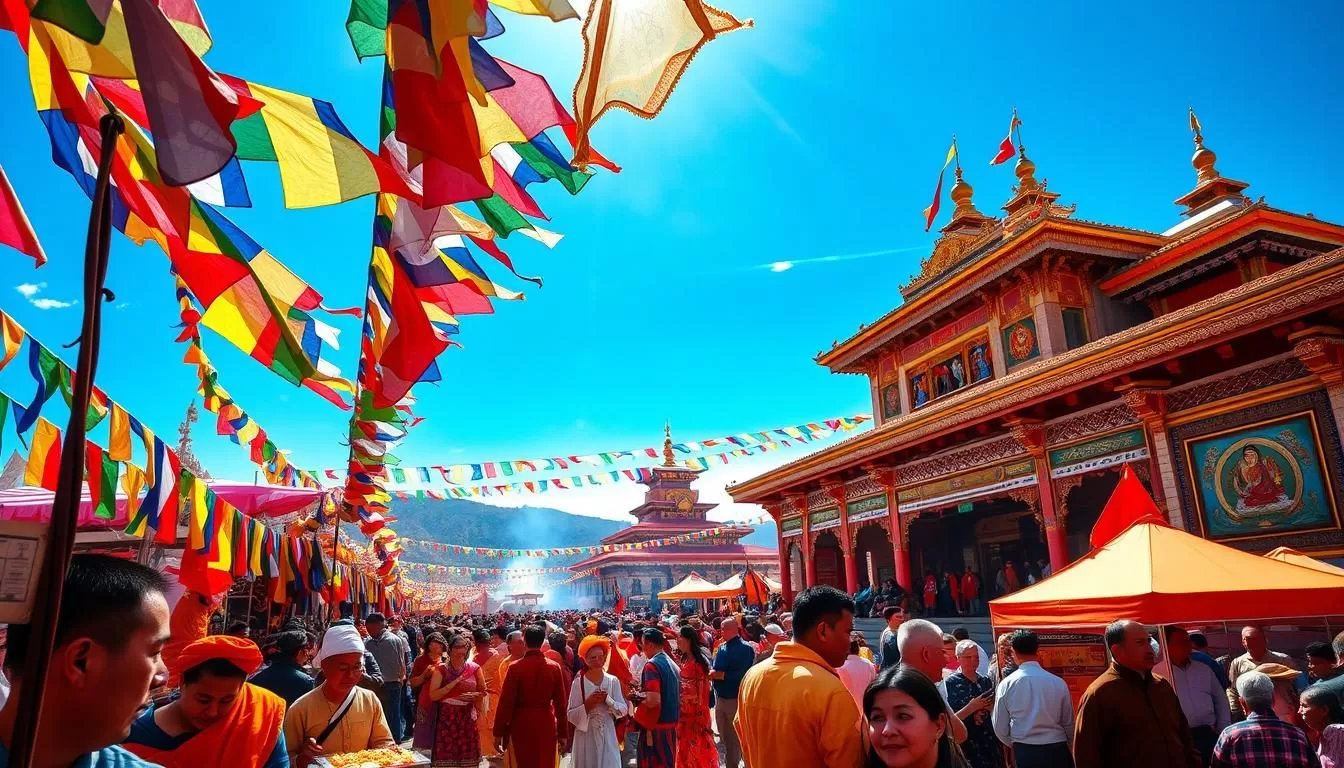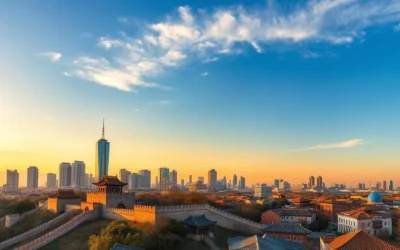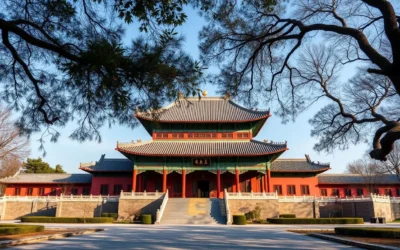✓ Accommodations✓ Flights✓ Rental Cars
Lhasa is a city where culture comes alive through its vibrant festivals. These events offer a unique glimpse into the traditions and spirituality of the area. From the unveiling of giant thangkas to the glow of butter lamps, each celebration tells a story.
One of the most iconic events is the Shoton Festival, which dates back to the 11th century. This festival features Tibetan opera performances and the display of a massive thangka, creating a magical atmosphere. Another highlight is the Butter Lamp Festival, where thousands of lamps light up the night in honor of Je Tsongkhapa.
These festivals are not just about rituals; they are a blend of dance, music, and community spirit. Whether you’re exploring a village or a monastery, you’ll find yourself immersed in the rich tapestry of local traditions.
Overview of Tibetan Festivals and Cultural Highlights
Tibetan celebrations are a vibrant blend of spirituality, art, and community. These events are deeply rooted in Tibetan Buddhism, offering a unique glimpse into the area’s rich heritage. From masked dances to prayer ceremonies, each festival tells a story of devotion and tradition.
What Makes Tibetan Festivals Unique
What sets these festivals apart is their connection to the Tibetan calendar. Events like the Tibetan New Year and the Saga Dawa Festival are timed to align with significant lunar dates, creating a spiritual rhythm throughout the year. The use of masks in dances and the unveiling of giant thangkas add a layer of artistic expression that’s hard to find elsewhere.
Community plays a central role. Villages and monasteries come together to celebrate, creating an atmosphere of unity and joy. Whether it’s a prayer ceremony at the Jokhang Temple or a lively performance of Tibetan opera, these events are a testament to the region’s cultural depth.
Traditional Rituals, Dances, and Celebrations
Rituals are the heart of every festival. From lighting butter lamps to performing the Cham dance, each act carries deep spiritual meaning. These traditions are passed down through generations, ensuring their preservation.
Dances and performances are equally captivating. The Cham dance, with its intricate masks and costumes, is a highlight of many events. It’s not just a performance; it’s a form of prayer and storytelling. Similarly, Tibetan opera combines music, dance, and drama to bring ancient tales to life.
These festivals are more than just events; they’re a celebration of life, faith, and community. Whether you’re a tourist or a local, you’ll find yourself immersed in the magic of these timeless traditions.
Exploring the Shoton and Butter Lamp Festivals
Step into the heart of Lhasa’s culture with the Shoton and Butter Lamp Festivals, a feast for the senses. These events are more than just celebrations; they are a deep dive into the spiritual and artistic heritage of the area. From the unveiling of giant thangkas to the glow of thousands of butter lamps, each moment is unforgettable.

Unveiling Giant Thangkas and Opera Performances
The Shoton Festival begins with the dramatic unveiling of a giant thangka at Drepung Monastery. This sacred scroll, depicting Jampa Buddha, is carried to the Thangka Wall at dawn, creating a breathtaking sight. The festival lasts for seven days, blending solemn rituals with lively performances.
Traditional Tibetan opera takes center stage during the celebrations. These performances, rich in history and artistry, attract both locals and tourists. Families gather in Norbulingka for picnics, enjoying local delicacies like Tibetan yogurt.
Lighting Butter Lamps and Celebrating Je Tsongkhapa
The Butter Lamp Festival is a mesmerizing display of devotion. On the 25th day of the 10th month in the Tibetan calendar, thousands of butter lamps light up Jokhang Temple. This ritual honors Je Tsongkhapa, a revered figure in Tibetan Buddhism.
Pilgrims walk the kora around the temple, creating a vibrant atmosphere. Barkhor Street transforms into a dazzling sea of light, symbolizing hope and spiritual renewal.
| Festival | Key Highlights | Duration |
|---|---|---|
| Shoton Festival | Thangka unveiling, Tibetan opera, picnics | 7 days |
| Butter Lamp Festival | Lighting of butter lamps, kora pilgrimage | 1 day |
These festivals are a perfect blend of art, culture, and spirituality. Whether you’re witnessing the grandeur of the thangka or the glow of butter lamps, you’ll leave with a deeper appreciation for this vibrant culture.
Tibet Autonomous Region, China: Top Festivals to Check Out When Visiting
Discover the vibrant heart of cultural celebrations in this unique area. These events are more than just gatherings; they are a window into the soul of a rich heritage. From the unveiling of sacred thangkas to the glow of butter lamps, each festival offers a glimpse into traditions that have stood the test of time.
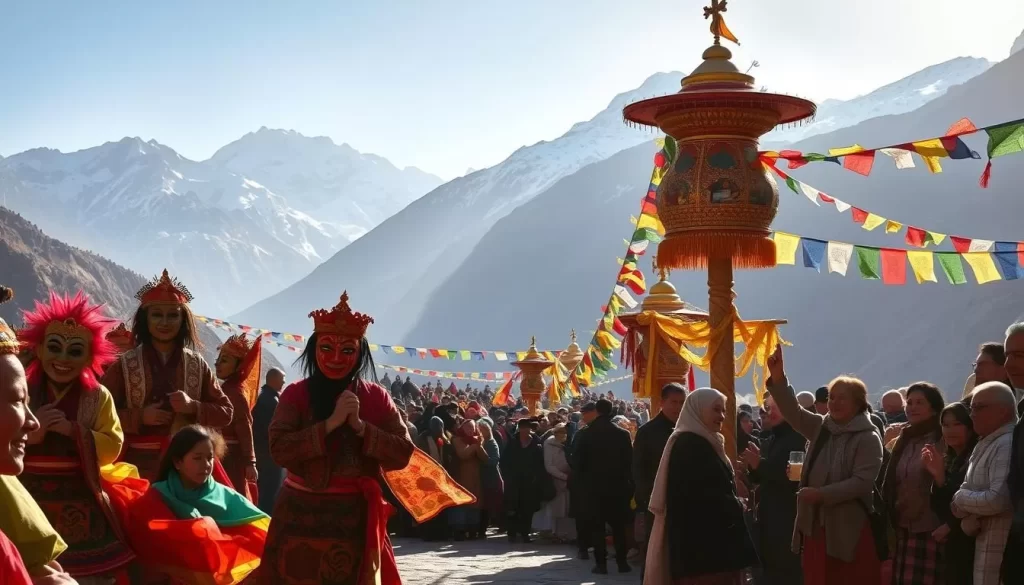
The Shoton Festival is a highlight, blending art and spirituality. It begins with the dramatic display of a giant thangka at Drepung Monastery, a sight that draws visitors from near and far. Over seven days, the festival combines solemn rituals with lively performances, creating an unforgettable experience.
Another must-see is the Butter Lamp Festival, a celebration of light and devotion. Thousands of lamps illuminate Jokhang Temple, symbolizing hope and renewal. Pilgrims walk the kora, adding to the vibrant atmosphere of this sacred event.
These festivals are a perfect blend of art, culture, and community. Whether you’re witnessing the grandeur of the thangka or the glow of butter lamps, you’ll leave with a deeper appreciation for this vibrant culture. Plan your trip around these dates to fully immerse yourself in these timeless traditions.
The Spirit of Tibetan Horse Racing and Ritual Performances
Feel the pulse of tradition and excitement at the Yushu Horse Racing Festival. This event is a thrilling blend of sport, culture, and spirituality, offering a unique glimpse into the heritage of the area. Held in late July and early August, it’s a time when communities gather to celebrate their shared traditions.
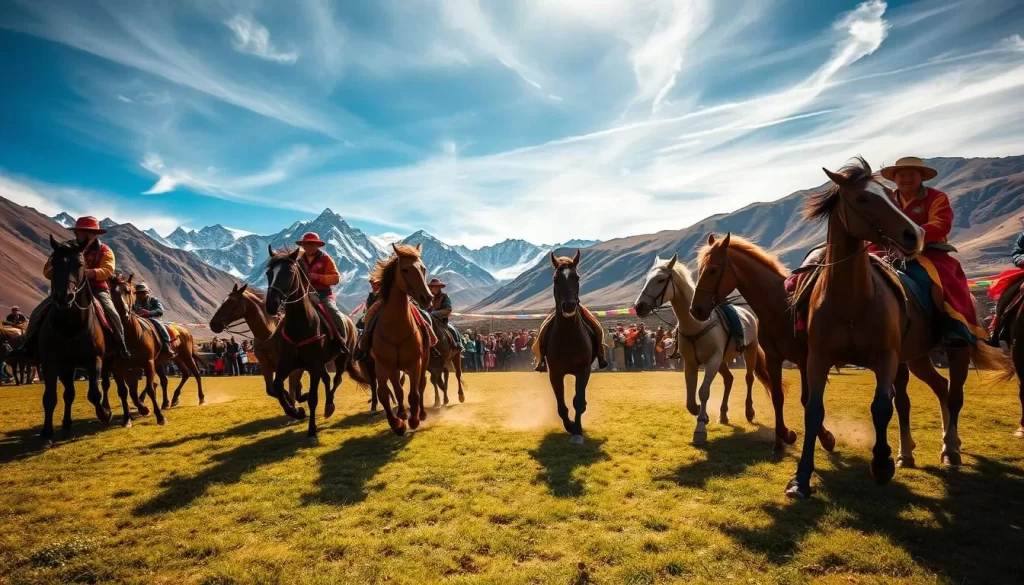
Experience the Thrill of the Yushu Horse Racing Festival
The Yushu Horse Racing Festival is a highlight of the summer. Local riders showcase their skills with breathtaking acrobatic feats, racing across green meadows at high speeds. The festival is not just about competition; it’s a cultural celebration that brings together families from across the region.
Participants dress in traditional costumes, and horses are adorned with colorful ribbons and flags. The atmosphere is electric, with cheering crowds and the sound of hooves pounding the ground. It’s an unforgettable experience that captures the spirit of the area.
Cham Dance and Traditional Ritual Displays
Beyond the races, the festival features the mesmerizing Cham dance. This traditional performance is a blend of celebration and ritual prayer, performed in intricate masks and costumes. The dance tells stories of ancient traditions, offering a deeper connection to the cultural roots of the event.
Ritual displays are another key part of the festival. These ceremonies honor the spiritual heritage of the area, creating a sense of unity and reverence among attendees. It’s a powerful reminder of the deep connection between sport and spirituality.
| Event | Highlights | Duration |
|---|---|---|
| Yushu Horse Racing Festival | Horse races, acrobatic feats, traditional costumes | Late July to early August |
| Cham Dance | Ritual performances, masks, storytelling | Throughout the festival |
Whether you’re cheering on the riders or marveling at the Cham dance, the Yushu Horse Racing Festival is a celebration of heritage and community. Plan your visit to this Horse Racing Festival and immerse yourself in the vibrant traditions of the area.
Seasonal Highlights and Tips for Your Tibetan Festival Trip
Planning your trip around the Tibetan calendar ensures you experience the most vibrant and authentic cultural events. Many festivals are scheduled according to lunar dates, making it essential to align your travel dates with these significant times.
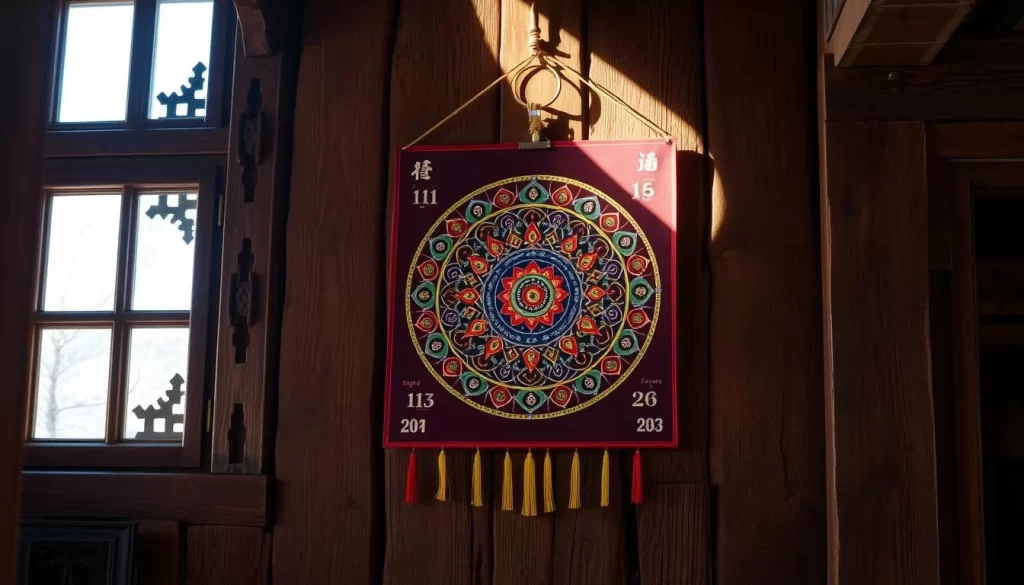
Timing Your Visit with the Tibetan Calendar
The Tibetan New Year, known as Losar, is a major celebration typically occurring in February or March. This is a fantastic time to witness traditional rituals and community gatherings. For summer events, the Shoton Festival in August is a highlight, featuring opera performances and the unveiling of giant thangkas.
Autumn, from September to October, is another ideal period to visit. The weather is pleasant, and you can enjoy events like the Butter Lamp Festival, where thousands of lamps illuminate Jokhang Temple. Winter, though colder, offers a serene experience with fewer tourists and unique celebrations like the Harbin Ice Festival.
“Aligning your trip with the Tibetan calendar not only enhances your experience but also deepens your connection to the local culture.”
Here’s a quick guide to help you plan your visit:
| Season | Festival | Best Time |
|---|---|---|
| Spring | Nyingchi Peach Blossom Festival | April |
| Summer | Shoton Festival | August |
| Autumn | Butter Lamp Festival | September-October |
| Winter | Harbin Ice Festival | December-February |
For more detailed insights into seasonal experiences in Tibet, consider booking a tour that aligns with these dates. This ensures you don’t miss out on the region’s most iconic events.
Remember, planning ahead is key. Reservations should be made at least 20 days in advance to secure permits and accommodations. This preparation allows you to fully immerse yourself in the magic of these timeless traditions.
Immersing Yourself in Monastic Culture and Tibetan Opera
Immerse yourself in the spiritual and artistic heart of a unique cultural experience. This journey takes you to iconic monasteries and sacred temples, where the essence of Tibetan Buddhism comes alive. These sites are not just places of worship; they are living museums of history and tradition.
Visits to Iconic Monasteries and Sacred Temples
Your exploration begins at Drepung Monastery, one of the largest and most revered monastic institutions. Here, you’ll witness the unveiling of a giant thangka during the Shoton Festival, a breathtaking display of devotion and artistry. The monastery’s architecture and serene atmosphere offer a profound sense of peace.
Next, visit Sera Monastery, known for its lively debate sessions among monks. These debates are a unique blend of intellectual rigor and spiritual practice, providing insight into the monastic way of life. The Jokhang Temple, another must-see, is a spiritual hub where pilgrims gather to perform the kora, a ritual circumambulation.
Enjoying Traditional Tibetan Opera and Performances
No visit is complete without experiencing the vibrant world of Tibetan opera. This ancient art form combines music, dance, and drama to tell stories of heroism and morality. Performances are often held at the Norbulingka Summer Palace, where the colorful costumes and expressive masks captivate audiences.
These operas are more than just entertainment; they are a window into the soul of Tibetan culture. The intricate choreography and powerful vocals create an unforgettable experience. Whether you’re a first-time visitor or a seasoned traveler, the opera will leave you spellbound.
For a deeper understanding of these cultural treasures, consider booking a festival tour. These tours offer expert guidance and ensure you don’t miss any highlights. Immerse yourself in the magic of monastic culture and Tibetan opera, and take home memories that will last a lifetime.
Conclusion
Your journey through these cultural celebrations offers a deep connection to traditions that have thrived for centuries. From the unveiling of giant thangkas to the glow of butter lamps, each festival is a testament to the area’s rich heritage. These events blend ritual, performance, and community spirit, creating unforgettable experiences.
Timing your visit according to the Tibetan calendar ensures you witness the most vibrant celebrations. Whether it’s the Shoton Festival or the Butter Lamp Festival, each day is filled with unique rituals and artistic displays. Planning ahead allows you to fully immerse yourself in these timeless traditions.
From dramatic opera performances to serene monastic visits, these festivals offer a glimpse into the soul of the culture. As you explore the landscapes and historic sites, you’ll leave with a deeper appreciation for this vibrant heritage. Start planning your trip today and discover the magic of these celebrations. For more insights, visit our guide to festivals in Tibet.
The above is subject to change.
Check back often to TRAVEL.COM for the latest travel tips and deals.
